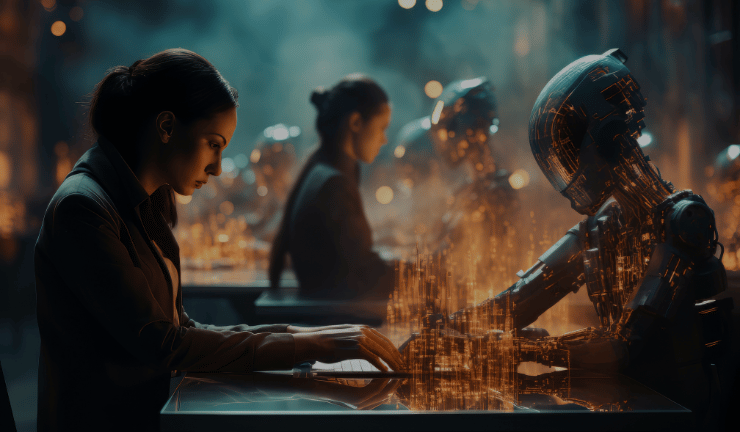The Future of AI Agent Communication and What It Means for Enterprise Innovation
As AI agents move from concept to operational reality, the architecture behind how these agents interact with tools, data, and each other is quickly becoming a foundational battleground. Two dominant protocols—Anthropic’s Model Context Protocol (MCP) and Google’s Agent-to-Agent (A2A) protocol, are paving distinct paths toward how AI ecosystems will evolve.
For enterprises and CTOs looking to future-proof their AI integration strategies, understanding the difference between MCP vs. A2A is more than technical curiosity, it’s strategic clarity.
What is MCP (Model Context Protocol)?
MCP, developed by Anthropic, offers a vertical integration framework. Think of it as a universal USB port for AI, allowing large language models (LLMs) to seamlessly access external tools, databases, APIs, and workflows, on demand.
Key Features:
- Uses JSON-RPC for universal communication
- Prioritizes model-to-resource interaction (tools, APIs, files)
- Great for building AI agents that operate like smart copilots or internal assistants
- Already supported by OpenAI, Microsoft, and Google DeepMind
Enterprise Impact:
With MCP, organizations can connect AI agents directly into business systems like CRMs, ERP tools, document repositories, or even codebases, without complex custom integration work.
What is A2A (Agent-to-Agent)?
A2A, introduced by Google, is built for horizontal integration, letting multiple specialized agents discover, communicate, and collaborate to achieve a task.
If MCP is about plugging a model into tools, A2A is about enabling multiple models to talk, delegate, and operate as a team.
Key Features:
- Peer-to-peer agent communication via “Agent Cards”
- Built-in task management and delegation framework
- Feedback loops for collaboration between agents
- Ideal for orchestrating multi-agent workflows across enterprise systems
Enterprise Impact:
A2A makes complex, cross-departmental automation a reality. Imagine an “HR agent” talking to a “Finance agent” and a “Compliance agent” to fully automate onboarding, expense approval, or regulatory reporting.
MCP vs. A2A: Which is Right for Your Enterprise?

Both protocols are likely to coexist in the future. MCP helps enterprises plug LLMs into existing systems. A2A helps scale from single-agent use cases to autonomous, collaborative agent ecosystems.
Why This Matters to You and How ISHIR Can Help
ISHIR’s Data AI Acceleration derived helps SaaS startups, mid-market and enterprise clients design AI-native architectures that don’t just talk about AI they do something meaningful with it.
If your organization is exploring:
- How to create internal AI agents to reduce employee workload
- Building secure workflows that span departments using agentic automation
- Connecting LLMs to internal tools (like Jira, Salesforce, SQL, SharePoint)
Then protocols like MCP and A2A aren’t just technical choices, they’re foundational.
We help you:
- Evaluate the right protocol for your use case
- Design a roadmap for AI-first innovation
- Build and deploy AI agents that talk to your systems, or to each other
Understanding MCP vs A2A Matters
Whether you’re building a single smart assistant or orchestrating a team of AI agents, understanding and leveraging MCP and A2A is mission-critical for your AI strategy.
MCP enables precise, plug-and-play access to your tools. A2A unleashes collaborative intelligence across agents.
The future is agentic and it’s here. Let ISHIR help you architect it.
Ready to Make AI Actually Work for You?
ISHIR helps you go beyond the buzz, designing agentic AI architectures that connect, automate, and deliver real results.


